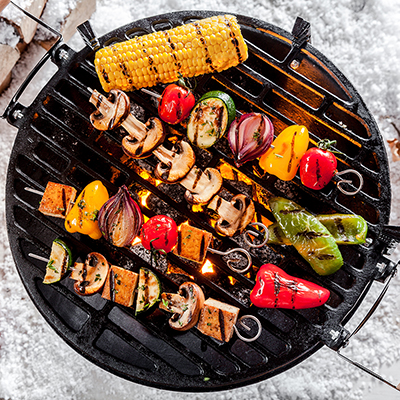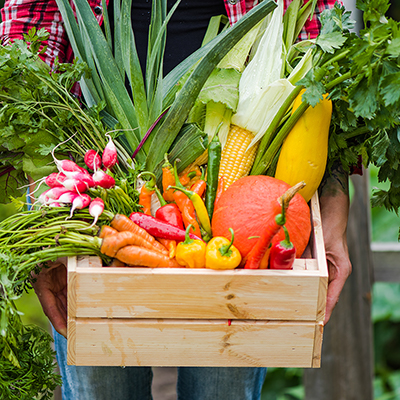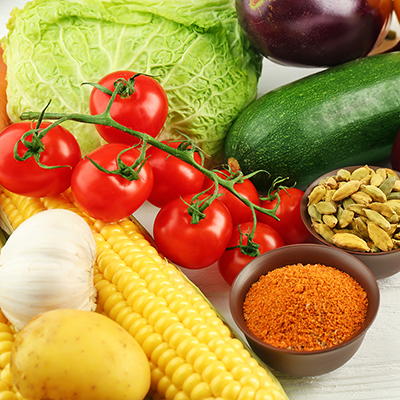Fresh Recipes from the Garden
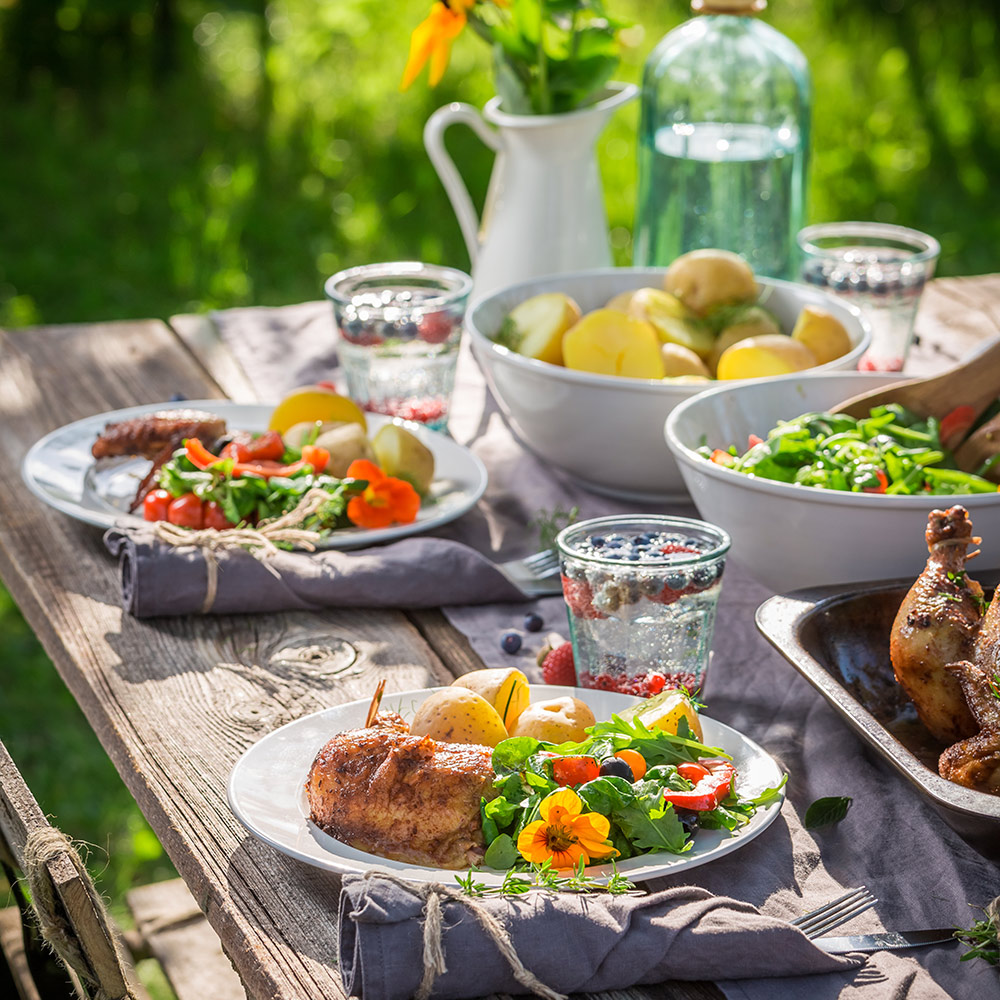
Last updated April 9, 2025
There are many good reasons to grow a vegetable garden in summer. Working outdoors, nurturing plants and reducing your grocery bill are just a few. For many gardeners, though, it’s the opportunity to cook the freshest produce.
After all, you can’t get much fresher than your own backyard or patio. From tomatoes to cucumbers, we have ideas for getting the most out of your garden vegetables. In this guide, you’ll find tasty recipes for using up the best of your garden’s harvest.
Table of Contents
Lettuce
Green Beans
Cucumbers
Tomatoes
Peppers
Lettuce
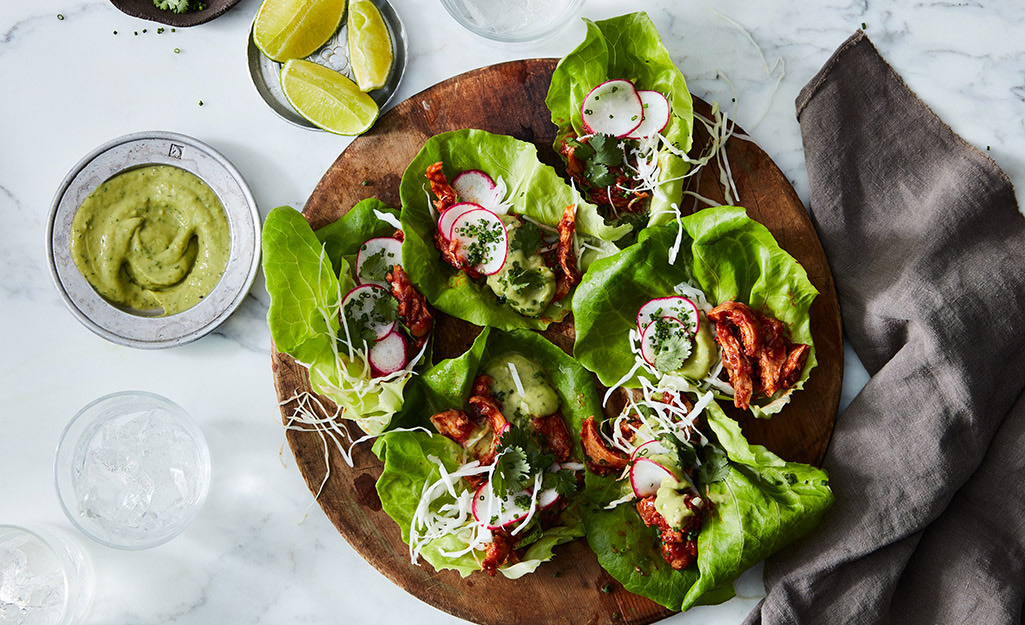
Once you taste farmer’s market salad greens, it’s hard to go back to supermarket salad. That’s the appeal behind growing your own lettuce. Salad greens are a cool weather crop and simple to grow once you master the succession sowing technique that will ensure salad days for weeks.
Grow lettuce from seedlings or seeds. Look for seed tapes that you place in organic garden soil, cover, water and harvest. Lettuce grows best in temperatures between 55 and 70 degrees Fahrenheit. In temperatures above 75 degrees, most lettuce cultivars will bolt, or flower, and the leaves will taste bitter. Look for heat-tolerant seed varieties. Lettuce can be grown hydroponically, too.
Among the many lettuce varieties, small Romaines like Burpee’s ‘Little Gem’ make a sturdy and tasty wrap for fillings like this spicy chicken braise. Get the recipe for Spicy Braised Chicken Wraps.
Green Beans
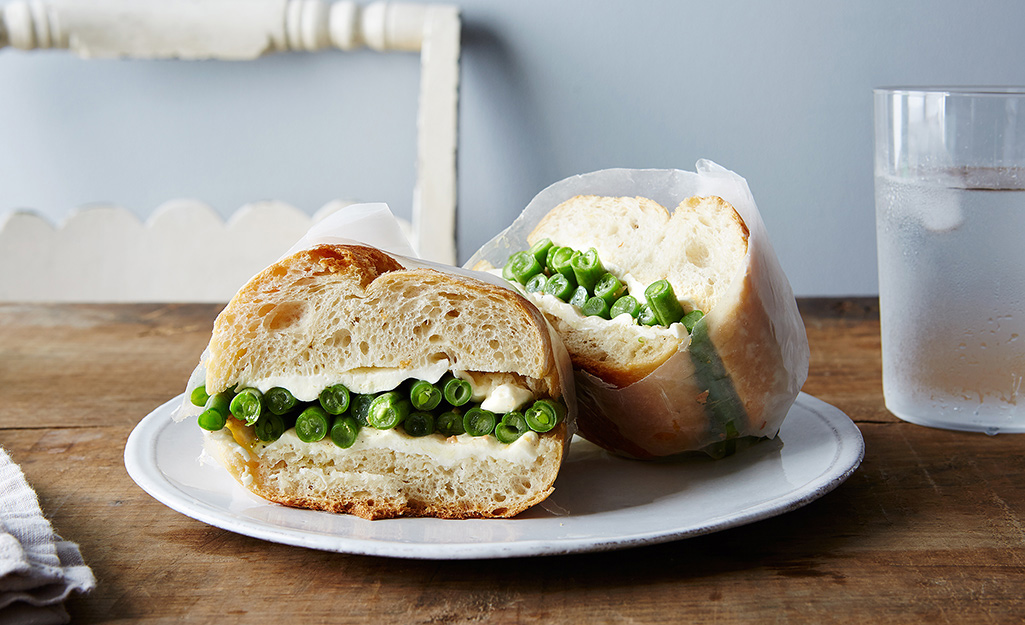
Green beans are easy to grow in your backyard garden. They grow quickly from seed in average soil and as long as they have lots of sun and regular water, you’ll have a good harvest. You can also start with green bean seedlings.
The green beans we grow are the unripe fruits of bean plants. The pods are picked before they mature and cooked by steaming, boiling or sauteeing.
Plan your garden for several crops of green beans through the summer. Plant every 14 to 21 days up until 60 days before the first frost in your area. Look for compact varieties like Burpee’s ‘Tendergreen’ that can be grown in-ground or containers.
In the kitchen, green beans are delicious cooked simply, either Southern-style with pork, or sautéed with butter and fresh herbs. Try this innovative recipe that uses garlicky green beans as the filling topped with fresh mozzarella in a tasty sandwich. Get the recipe for a Marinated Green Bean Sandwich.
Cucumbers

Cucumbers are a cool, refreshing treat in summer. These fruits grow well from seed or seedling in soil amended with organic compost. When selecting a variety to plant, keep in mind that some are bred for pickling and others for slicing. Best advice: do your research, grow several varieties and have a taste test.
Cucumbers need trellising or staking to keep the fruits from resting on the ground. Learn more about how to trellis cucumbers.
When you’re ready to harvest cukes, pick them in the cool part of the day. Make a vinegary salad that uses up more of your garden-fresh produce like scallions, radishes and cilantro. Get the recipe for Smashed Cucumber Salad.
Tomatoes

The pursuit of the ultimate tomato sandwich is yet another reason for gardeners to invest time and toil in a summer vegetable garden. Tomatoes are arguably the crown jewels of the summer garden.
Whether you grow cherry tomatoes or slicers, there’s plenty of seeds and seedlings to try in your garden. Tomatoes thrive when they have lots of sunshine, good drainage, consistent watering and nutrition from organic compost and fertilizers like fish emulsion. Tomatoes grow well in containers, too. Look for patio or compact varieties that are bred for success in small spaces.
When it’s time to harvest your tomatoes, keep in mind that the fruit will continue to ripen off the vine. Place fruit on a kitchen windowsill or counter for it to reach the peak of ripeness.
There are countless ways to prepare tomatoes, but it’s hard to go wrong by stirring up a marinade and firing up the grill. Pull some mint from the garden as a garnish. Try this recipe for Grilled Marinated Tomatoes.
Peppers
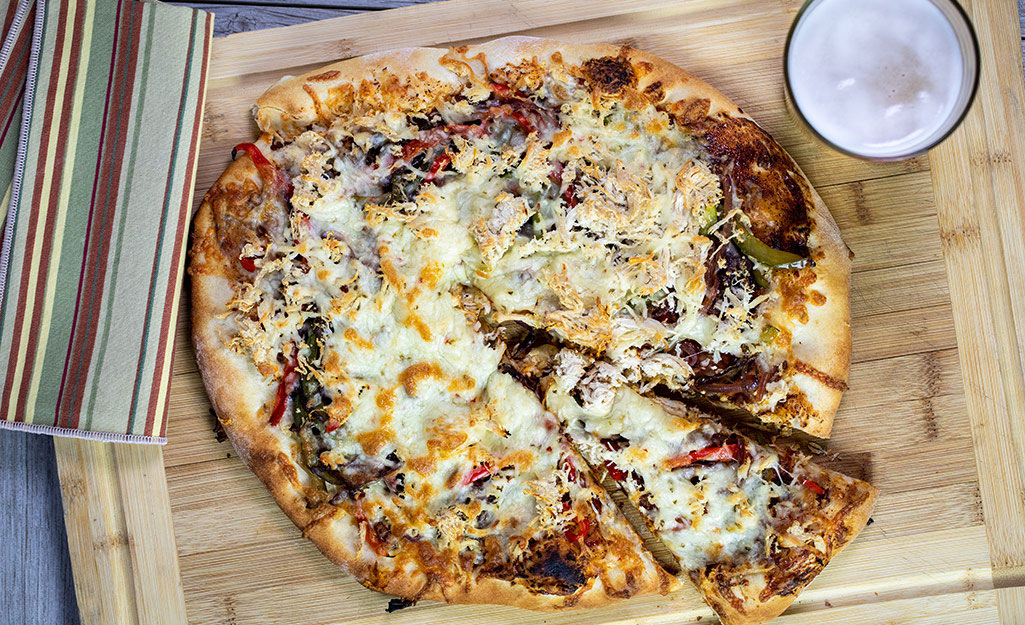
Peppers are as pretty to grow as they are to eat. The jewel-colored vegetables emerge green and ripen to vibrant red, orange and yellow. In addition to good looks, peppers are a perfect edible for the beginning gardener because they aren’t troubled by many pests or diseases.
Like tomatoes, peppers need a lot of sunshine. Start with seedlings for summer success and look for patio or compact varieties that can sit outside your kitchen door, waiting to be used in your next culinary creation.
Peppers are incredibly versatile in the kitchen. You can eat them raw, or grill them as in this recipe for barbecue chicken pizza. Give the recipe a try: Grilled Barbecue Chicken Pizza.
Whether you need the right planters, seeds or potting soil, The Home Depot delivers
online orders when and where you need them.








